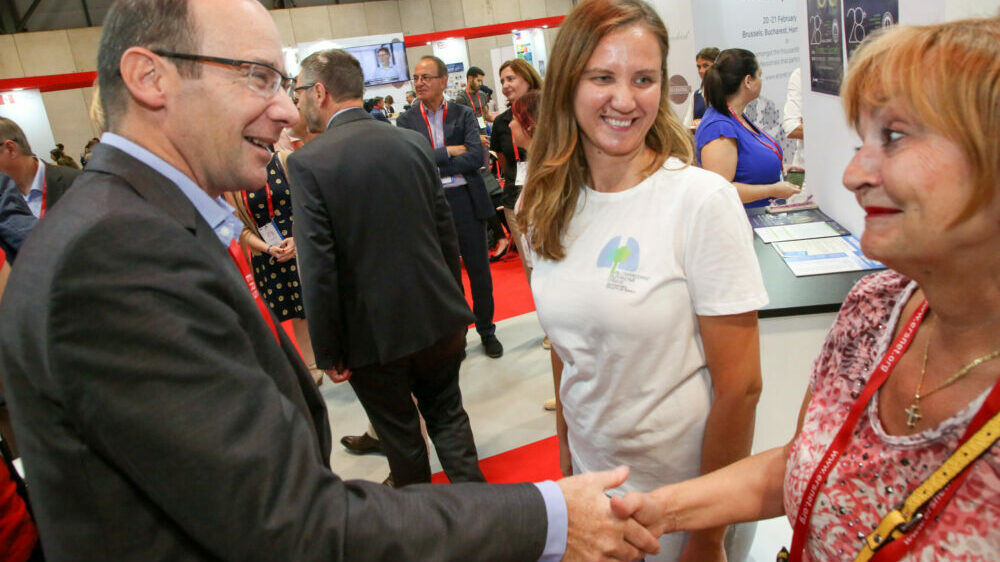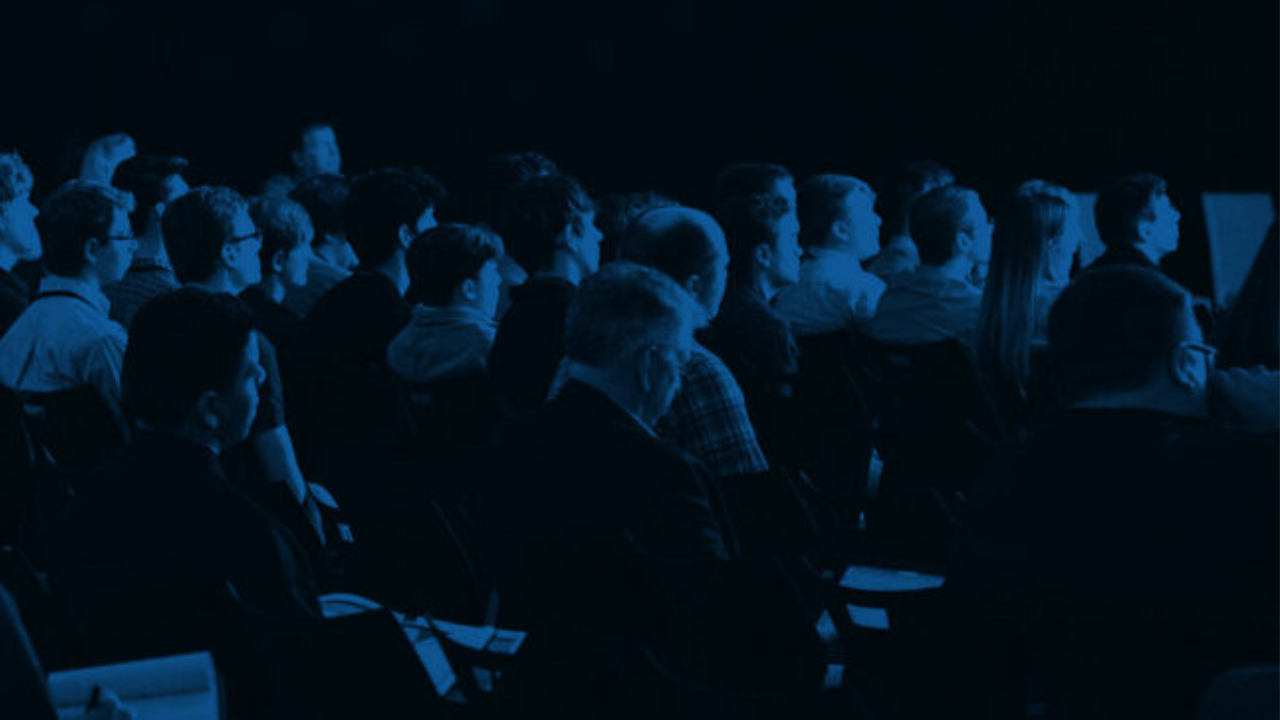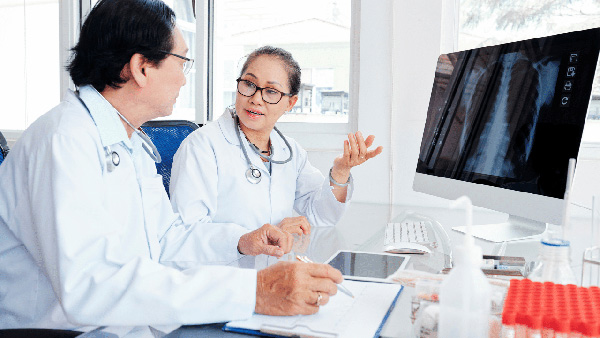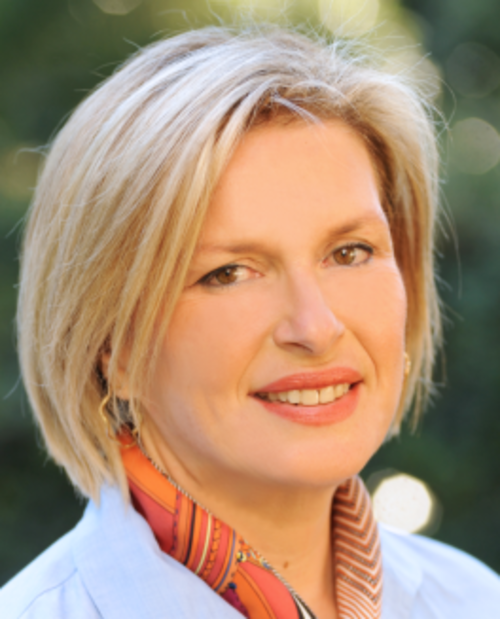Interview with ERS President Prof. Mina Gaga about her views on the ERS International Congress
Early career members (ECMs) Marianthi Iliopoulou (M) 7th Respiratory Medicine Department, “Sotira” Athens Chest Hospital, Athens, Greece and Clemantine (Nina) Bostantzoglou (C), Intensive Care Unit, Korgialeneion-Benakeion General Hospital, Athens, Greece, enthusiastically accepted the challenge to interview current ERS President Prof. Mina Gaga (M.G.) to understand her views on the annual ERS Congress. Prof. Mina Gaga is one of the “iron ladies” of pulmonary medicine worldwide. Her clinical work is focused on asthma, COPD and lung cancer; areas where she also has extensive clinical research experience and multiple publications. Moreover, she is actively involved in medical education programmes and has contributed internationally in guideline development for severe asthma. In advance of the annual ERS International Congress in Paris, she illustrates the basic contour of the Congress from her perspective as the ERS President.
M & C: Prof. Gaga, what is the main scope of the annual Congress in Paris?
M.G: The main goal of the annual Congress is to bring pulmonologists and all healthcare professionals working in respiratory care, research and education together, to give an update on all new research data, to provide excellent education and a productive environment for discussions, and to support networking and making of new friends. A lot of new, important studies will be presented for the first time and more than 5000 abstracts will be presented and discussed so that the discussions and comments can help the evolution of projects and research. Education will be blended and presented in various formats such as skills workshops, meet the expert sessions, and challenging clinical cases etc., which are organized to fulfill the diverse educational needs of all participants. The educational and scientific program will be organised into eight main disease areas: airways diseases, respiratory infections, thoracic oncology, interstitial lung diseases, paediatrics, respiratory critical care, sleep and breathing disorders and pulmonary vascular diseases. This year, a new feature will be a Game Zone at the congress center, where participants can test their knowledge in a fun and interactive way. Regarding networking and career opportunities, all attendees are invited to their assembly’s business meetings, to participate in Clinical Research Collaborations (CRCs) through which different areas of research are strengthened in respiratory medicine, and also to find out about and join task forces through which guidelines statements and technical standards are produced to improve our clinical practice.
M & C: Modern pulmonary medicine owes much of its success to important technological advances. In what way do you think the attendees can be informed and trained during the annual Congress? What are the opportunities for ECMs of the society during the Congress?
M.G: It is undeniable that ECMs will have many opportunities to learn and be trained in modern respiratory medicine. These opportunities include the new Game Zone and the bronchoscopy session, which aims to provide specific theoretical background and practical skills in modern aspects of bronchoscopy like EBUS-TBNA, b-EUS, etc. There is also the poster area where attendees will have the potential to gain a global view of highlights of respiratory medicine via studies from countries all over the world, and the exhibition area, which is the place to be in terms of effective demonstration of new technological equipment and devices.
M & C: What kind of networking opportunities are offered for attendees during the annual Congress?
M.G: The Congress is the biggest meeting in respiratory medicine, with over 22,000 delegates regularly attending, which gives a unique opportunity to meet colleagues from all over the world. Networking promotes the advancement of knowledge and science, provides career opportunities and also strengthens the feeling of participation in a productive and energetic community. Assembly meetings are excellent opportunities to meet with peers of the same expertise and are a platform to be proactive in decision making of future projects. Meet the expert sessions also encourage a more personal approach, giving the chance to interact with acknowledged respiratory professionals. I strongly encourage younger participants to join the early career member committee (ECMC) and fellowships session on Tuesday afternoon. The announcement of grants and awards will be followed by a series of talks especially suited for ECMs and their professional development. The ECM session is concluded with the ECM Networking Event, which is an excellent opportunity to talk with other ECMs and with several senior ERS members.
M & C: What is the connection between ERS and ATS, as well as with other relevant societies worldwide? In what way will the annual Congress in Paris contribute to the interaction and collaboration with these societies?
M.G: All international respiratory societies share a vision for global respiratory health and work together in advocacy with an aim to push for prevention and early diagnosis and high quality healthcare with less disparities. FIRS is the Forum of International Respiratory Societies and there are regular meetings. Moreover, this year, during the ATS Annual Congress in San Diego, we signed an ERS/ATS memorandum of understanding to work together in projects that promote science, guidelines and patient care. Memorandums of understanding have also been recently signed between ERS and the European Society of Radiology (ESR) as well as the European Academy of Allergy and Clinical Immunology (EAACI). ERS currently participates in taskforces with the European Society of Cardiology (ESC), the European Society for Radiotherapy & Oncology (ESTRO) and the European Society of Thoracic Surgeons (ESTS).
ERS is also collaborating with and supporting patients through the European Lung Foundation (ELF), the public voice of ERS, which is a foundation chaired by a patient and provides a forum where patients and the public can find information and support, and are brought into contact with respiratory professionals. The patient voice is pivotal for ERS and a recent example of an innovative collaboration is the participation of patients as Co-Chairs in the severe asthma CRC (SHARP).
M & C: The upcoming Congress in Paris will be the one under your presidency. Do you have any advice for attendees, so they can get the most out of the conference?
M.G: My advice would be: be there and participate! This year’s Congress will provide a dynamic blend of scientific and educational sessions, and networking and career opportunities in a great and easily accessible venue in the historic city of Paris. I am looking forward to being there and to welcoming you all to this exciting and prestigious event held during my presidency. I look forward to meeting with ERS people, who are the backbone of the society, its present and its future, and the ones that will determine the success of yet another ERS annual Congress.





